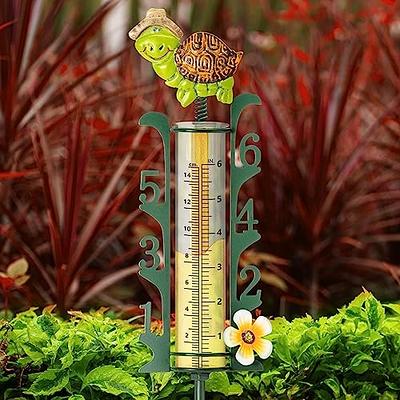The Rain Gauge: Necessary Info and Finest Practices for Weather Condition Lovers
The Rain Gauge: Necessary Info and Finest Practices for Weather Condition Lovers
Blog Article
DIY Rain Scale: Straightforward Actions to Make Your Own
Are you curious about tracking rainfall in your location? Producing your very own DIY rain scale is a efficient and straightforward method to measure and videotape rainfall. With simply a few usual products and some basic actions, you can easily build your very own rain scale at home. In this overview, we will supply you with a step-by-step procedure to help you produce your very own rain gauge. No demand for any specialized understanding or tools - this project can be finished by anyone. By complying with these straightforward instructions, you will certainly have a trustworthy device to determine rains and add to your understanding of the regional weather patterns. Allow's obtain started on making your DIY rainfall scale today!
Gather Materials
To start building your do it yourself rainfall scale, collect all the essential products making use of a detailed checklist of things. Having the appropriate products accessible will certainly ensure the successful development of your rainfall gauge and allow for precise measurements of rainfall. To start with, you will require a clear plastic container or cyndrical tube, such as a plastic container or container. Make sure the container is transparent to make sure that you can conveniently see the water level inside. Next off, you will require a leader or gauging tape to note the increments on the container. This will enable you to measure the amount of rains properly. Furthermore, you will need an irreversible pen or water resistant tape to mark the dimensions on the container. When subjected to rain, this will certainly make sure that the markings stay noticeable also. Finally, you will certainly require a durable base or risk to safely hold your rain scale in location. This can be a wood or metal risk that can be placed into the ground or a strong flat surface area to supply stability. Collecting these materials beforehand will certainly improve the construction procedure and guarantee that you have every little thing you need to develop your own do it yourself rain scale.
Prepare the Container

Mark the Measurement Increments
To properly gauge the amount of rainfall, properly marking the measurement increments on your do it yourself rain gauge is essential. Without exact and clear markings, it would be difficult to identify the exact quantity of rainfall accumulated in your rainfall gauge. Right here are the steps to note the measurement increments on your rainfall gauge.
The most usual systems for gauging rainfall are millimeters and inches. As soon as you have selected the device, utilize an irreversible pen or waterproof paint to note the increments on the side of your rainfall gauge.
When noting the increments, it is essential to make certain that they are evenly spaced and plainly noticeable. Utilize a leader or measuring tape to guarantee precision and uniformity. Additionally, see to it that the markings are immune to fading or abrading, as direct exposure to the elements may trigger them to deteriorate in time.
Location the Rainfall Scale Outdoors
The rainfall scale must be positioned outdoors to properly accumulate rains information. The place selected for the rainfall gauge ought to be totally free and open from any type of obstructions that could potentially influence the dimension of rains. The Rain Gauge.
Furthermore, it is essential to place the rain gauge on a steady surface, such as a level ground or a tough blog post. This will protect against any kind of movement or tilting of the scale, which can cause unreliable measurements. It is also advisable to stay clear of putting the gauge near any kind of resources of synthetic water, such as lawn sprinklers or drain systems, as this could disrupt the precision of the measurements.
Display and Record Rainfall Information
Regular surveillance and recording of rainfall data is crucial for precise data evaluation and interpretation. By monitoring rainfall dimensions, you can acquire beneficial understandings into climate patterns, climate trends, and water source management. To properly keep track of and record rains information, it is crucial to establish a routine and keep constant techniques.
Firstly, make certain that your rain scale is positioned in an open area far Web Site from obstacles such as trees or structures that may obstruct rains. Additionally, see to it the rainfall gauge is degree and firmly anchored to avoid any motion that can impact the precision of the measurements.

When recording the rainfall information, it is vital to note the date and time of each measurement. Utilize a leader or a gauging stick to figure out the rains depth in the rain scale, and document this details properly.
To ensure the precision of the dimensions, it is advised to clear the rain gauge after each recording. This will prevent any overflow or evaporation from influencing succeeding dimensions.
Final Thought
Finally, creating a DIY rainfall gauge is a simple and sensible way to monitor and tape rainfall information (The Rain Gauge). By complying with the steps described in this post, you can quickly collect materials, prepare the container, note the measurement increments, and position the rain scale outdoors. Consistently checking and taping rains data can provide useful information for numerous purposes
Having the appropriate materials on hand will certainly ensure hop over to here the effective creation of your rain scale and allow for exact measurements of rains.To properly determine the quantity of rainfall, precisely noting the measurement increments on your Do it yourself rainfall scale is necessary.The rain gauge must be positioned outdoors to precisely accumulate rainfall information. The area chosen for the rainfall scale ought to be totally free and open from any kind of obstructions that might possibly influence the measurement of rainfall.In verdict, developing a DIY rain gauge Web Site is a basic and practical means to monitor and tape-record rains information.
Report this page